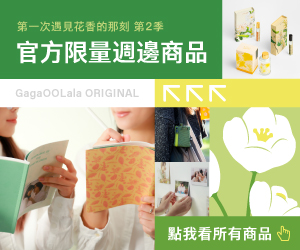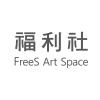膜-顧詠琪個展 The Membrane-Solo Exhibition of Yong Qi Gu

展期 Dates|2017.10/21-11/18
開幕 Opening Reception|10/28 (六) 3pm
地點 Venue|福利社 FreeS Art Space(展間 Room A),台北市新生北路三段82號B1
時間 Opening Hours|週二-週五 Tue.-Fri. 11:00-19:00、週六Sat. 13:30-21:00
(scroll down for English Version)
關於展覽
主體性別認同
意義視為可變動符號,關於日常生活的選擇,屏除外在條件因素,並不是二元對立也不完全是隨機的,探究選擇的意涵是剖析理性思維的途徑之一,但是跨越情感不可能到達的狀態,因此伴隨著某種慾望的型態,那麼這份情感能具有何種功能性左右我們的本質。個體的誕生、性別沒有選擇的掌控權,在授精的那一刻決定了新生命的性別,生物性的性別範疇認定是不可逆的,但在主體建立起自我認同的過程中,對於性別的認同卻是可變的。從個人經驗來對照其可變與不可變動之間的關係。
在羅蘭巴特評論集中提到主辭「我」,是孩童最晚學會的,因此孩童在說到自己的時候會以自己的名字稱呼自己,以第三人稱來稱呼自己,對兒童而言絕非是偽裝、投射或是距離,相反地,它是種即直的運作,並以公開、專橫的方式進行。在成長的過程中,逐漸形成「我」主體的符碼,會因為經驗的積累而出現不同的層次,轉回到第三人稱的代名詞狀態。
在最初的時候我們都像是一塊為吸水的海綿,隨著時間的積累,慢慢的豐富了我們的經驗,如同在哲學的領域裡,一直盛行著關於數學觀念之起源的討論,諸如線的觀念、圓的觀念、三角形的觀念等。有兩種為為重要的經典性理論, 一者主張人類的心靈猶如一張白紙,初時空無一物;之後所具有的一切,均是經由經驗的習染所致。比方說:經由眼睛看的許多圓形的物體,儘管其中沒有任何一個是完美的圓形,我們還是能抽繹出圓的觀念。第二種經典性的理論肇始於柏拉圖,他認為圓形、三角形、線之類的觀念,是完美的、內在於心靈之中的,正因它們是人類心靈與生俱來的,我們才得以將它們投影於外在的現實,儘管現實世界從未提供我們一個完美的圓或完美的三角形。
第二種經典型的理論始於柏拉圖,他認為圓形、三角形、線之類的觀念,是完美的、內在於心靈之中的,正因它們是人類心靈與生俱來的,我們才得以將它們投影於外在的現實,儘管現實世界從未提供我們一個完美的圓或完美的三角形。如同李維史陀所探討的結構主義,經驗與心靈相對立的這整個問題,似乎在神經系統結構上找到了解答,它並不是在心靈結構上,也不再經驗之中,而是在心靈與經驗之間的神經系統是怎麼建立的,他們如何使心靈和經驗連接以來。
陰性觀看-可見與不可見
膜,從母體出生前包覆的那一層薄膜,包覆身體的皮膚到人與人關係之間那層無形的膜,每一層關係都像是覆蓋著一層薄膜,即使看似密不可分的狀態依然有所阻隔,膜作為中介的中性物質媒介,描述那層外在皮膚的可變動性與不可變動性。
在作品系列中,我試圖用版畫的媒材在平面作品中,運用子宮母體薄膜的圖像語彙來傳達、跨越那一層無法言說記憶中的傷痛,「膜」這個圖像符號在作品中成為可見的主體,來描述其背後不可見的變動性與不可變動性。 比如說童年的陰影。母體系列所表述的身體感知為第一個部分,我使用母體子宮的圖像語彙利用鏡射對稱的方式,出現宗教儀式性的畫面構圖,此儀式性的表述為家族歷史中傷痛的療癒,畫面中的符號轉換成圖案化的對稱的、規律的形式。
以祭壇似的對稱構圖期望達到神聖的宗教感,對稱的圖像符號為雲氣,鏡射對稱後的雲氣圖像形成女性子宮的符號。人們在談論大氣時,使用雲氣的氣之概念與東漢時期的背景有關,漢高祖為楚人,楚人尚巫術帶有濃厚的迷信色彩,因此對於生死非常的重視,對死後的狀況可從墓葬中之壁畫和殉葬物中,如:棺廓外的雲紋圖繪,雲紋,即是氣之代表,許慎:《說文解字》「气,雲气也」,氣具雲氣之形像。雲氣圖像的循環概念和畫面中鏡射循環的構圖,療育家族記憶中的傷痛。
刺青蓋疤計畫
從系列的平面作品開始發展,在嘗試了人生第一個刺青之後開始接觸刺青,對於痛感經驗每個人都不同,無論是心理層面抑或是生理性的,因此我希望藉由這次個展的機會和大眾接觸,經過報名徵選的方式參與我的蓋疤計畫,在刺青過程的痛像是一種抒發,將不可見的傷痛經驗傷疤轉換成一個重生的圖像。
藝術家簡介|
顧詠琪
現攻讀版畫於 國立台北藝術大學美術創作研究所
2013畢業於國立台北藝術大學 美術系學士班
2011-2012 於法國布爾日國立高等美院交換學生
2007 畢業於私立復興商工 美工科繪畫組
------------------------------------------------
The Membrane - Exhibition Description
Subject gender identity
As we grow older we gradually build our self-identity. As adults, we are capable of a fluid gender identity, even if we cannot choose our gender when we are born. However much we would like to be completely rational in our choice of identity, our emotions have a powerful influence. My work focuses on the interplay between the fluid and stationary stages of identity development.
Roland Barthes, the French literary critic and philosopher, claims that the self-referential "I" is only learned after a child first learns to refer to himself using third-person pronouns. It is later in the child’s development that he will then begin to link together his first and third-person identity into a comprehensive concept of self.
Philosophy gives us two different ways of understanding the human mind. The first, advocated by John Locke, posits that the human mind is like a piece of white paper, at first empty. Only through experience can we build up our concepts of things. Further, this theory proposes that mathematical objects are based on the worldly objects we encounter through sensory experience. For example, although we may never come across a perfect circle in our daily lives, we can nevertheless imagine what such an object would be like.
The second major theory of cognition originates from Plato. He thinks that the ideas of circles, triangles, and lines are perfect and inherent in the mind. Unlike Locke’s empiricism, Plato’s rationalism asserts that we can conceive of perfect mathematical objects even without any sensory experience of them. In fact, the objects we encounter in our daily lives are mere “shadows” of these perfect mathematical ideas that exist outside of our minds.
Membrane: visible and invisible
The concept of the membrane serves to link the visible and the invisible. When meeting someone for the first time, for example, our impressions are influenced by outer appearance. These visible features guide our judgments. But there is also an invisible membrane that separates us. No matter how close we are, there is always a line you cannot cross. An invisible membrane still separates even the closest of friends or lovers.
The uterus, in its mirror-like symmetry, represents the cycle of pain and healing that every family experiences. The colors, forms, and patterns in my work reflect these maternal images.
Further, the symmetrical nature of my compositions draws on the religious symbolism of the altar. During the time of the Han Dynasty, the concepts of gas and clouds were intimately related with life and death. Accordingly, my work merges these two sets of symbols and combines them, using the familiar theme of the maternal reproductive organ.
Healing Trauma Through Tattoo
Finally, my tattoo work allows me to connect with people in a way that printmaking and painting cannot. Paradoxically, it is my hope that through the pain inflicted by the tattoo needle that these same people can begin to feel pleasure and accept the events of the past. A mental scar often accompanies a physical one. Even though I am powerless to erase the internal mental trauma of one’s past, through the medium of the tattoo, I can help others to embrace one’s outer trauma.
About Artist|
GU, Yong-Qi
Major in Printmaking MFA at Taipei University of Arts, Fine-arts department.
2013 Graduate from Taipei University of Arts, Fine-arts department, Printmaking Major BFA
2011-2012 École nationalé supérieure d'art de Bourges Exchange student
2007 Graduate from Fu-Hsin Trade &Art High school, Painting major












